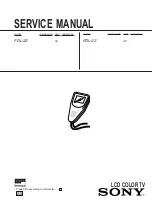
16
TO ADD GASOLINE:
1. Place the generator on a level surface. Make sure the
engine is OFF before adding or checking the fuel.
2. Unscrew the fuel cap (Fig. 6) and set it aside. The fuel
cap may be tight and hard to unscrew.
3. Slowly add unleaded gasoline to the fuel tank. Be careful
not to overfill. Reinstall fuel cap and wipe clean any spilled
gasoline with a dry cloth.
NOTE:
Do not fill the fuel tank to the very top. If you do
so, gasoline will expand and spill during use, even with
the fuel cap in place.
TO CHECK GAS LEVEL
(before every subsequent start):
1. Before starting the generator, check the fuel gauge (Fig. 7) to see if there is sufficient fuel inside the tank:
• E
= Empty
• F
= Full
2. If the tank is empty add gasoline to the gas tank. See above section, "To Add Gasoline".
STEP 3 - CONNECT THE BATTERY
Fuel Cap
Fuel Cap
WARNING!
Use only genuine WEN batteries with your generator (part no. 56380i-1304). Use of other
batteries may induce premature product failure and could pose a safety risk.
GENERATOR PREPARATION
Fig. 6
Fuel Cap
ABOUT THE BATTERY
1. The lithium-ion battery supplied with your generator is only partially charged, in order to maximize its service
life. The battery may not have enough charge to start the engine during its first use. If this is the case, connect the
battery according to the instructions below, and start the generator using the recoil starter, according to the instruc-
tions below. The battery will receive charge when the generator is running.
2. Lithium-ion batteries are subject to a natural aging process. The battery must be replaced at the latest when its
capacity falls to just 80% of its capacity when new. Weakened cells in an aged battery are no longer capable of meet-
ing the high power requirements needed for the proper operation of your generator, and therefore pose a safety risk.
3. DO NOT INCINERATE BATTERY. Do not throw the battery into an open fire as this poses a risk of explosion. Do
not ignite the battery or expose it to fire.
4. AVOID DAMAGE AND SHOCKS. Immediately replace batteries that have been dropped from a height of more than
one meter (3 feet) or those that have been exposed to violent shocks, even if the housing of the battery appears to
be undamaged. The battery cells inside the battery may have suffered serious damage. In such instances, please
read the waste disposal information on p. 31 for proper battery disposal.
5. DO NOT CRUSH, DROP OR DAMAGE BATTERY. Do not use the battery if it has sustained a sharp blow, been
dropped, run over or has been damaged in any way (e.g. pierced with a nail, hit with a hammer, stepped on, etc.).
















































